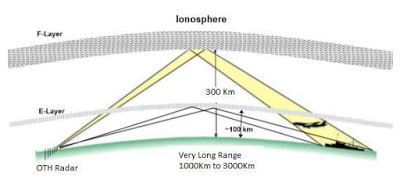
This article was last updated on April 16, 2022
Canada: ![]() Oye! Times readers Get FREE $30 to spend on Amazon, Walmart…
Oye! Times readers Get FREE $30 to spend on Amazon, Walmart…
USA: ![]() Oye! Times readers Get FREE $30 to spend on Amazon, Walmart…
Oye! Times readers Get FREE $30 to spend on Amazon, Walmart…
A recent article in the December 2017 edition of the United States Army’s Foreign Military Studies Office (FMSO) provides us with an interesting look at Russia’s recent advances in the field of defending Mother Russia from hypersonic weapons, the latest version of weapons that can deliver a conventional warhead anywhere on earth in as little as one hour. The information in the article is, in part, taken from a Russian language September 5, 2017 article in Russia’s Svobodnaya Pressa written by Vladimir Tuchkov.
According to the English language translation of the Svobodnaya Pressa article, the completion of the Global Missile Attack Warning System (SPRN) continuous radar field, known as Konteyner (container radar) or 29B6, should will take place in 2018. The system became operational in 2013 and was developed by PKP NIIDAR for a price of 10 billion rubles ($176 million US at current exchange rates). For the first time in Russia history, the nation will be protected by a continuous radar field with the ability to “see” over-the-horizon to a radial distance of 3000 kilometres (at 50 sweeps per second), a coverage area of 60 degrees and an altitude of 100 kilometres (i.e. it is not capable of seeing into outer space). In the case of traditional radar, the use of ultra-short wavelengths (i.e. microwaves) prevent the system from seeing beyond the horizon. Long-wave radars have the capability to see beyond the horizon but are impractical because they use a huge array of antennas and consume very large amounts of power. The ability to see over-the-horizon is created by the reflection of shortwave radio bands from the ionosphere which travel back towards the surface of the earth as shown on this diagram from RF Wireless World:
If the wave hits an object, it returns to the receiving antenna along the same route and continues to track the trajectory of the object. The radar is capable of seeing unmanned aerial vehicles and ballistic missiles, however, it is most effective at determining the location of fast-moving objects like cruise missiles and aircraft. Russia’s Aerospace Troops (VKS) estimates that, in order to combat hypersonic weapons, the system must be able to detect and provide targeting information to VKS interceptors at a range of no less than 1033 kilometres.
The system has a reception field with 144, 35 metre-tall antenna masts in an area covering 1300 by 200 metres. The transmitting antennas are located 300 kilometres from the receiving array near Gorodets town, Nizhegorodskaya oblast. The first field was placed in the Mordovian city of Kovylkino, located 550 kilometres southeast of Moscow. The current system is capable of seeing all of the objects in Western Europe’s airspace including Poland, Germany and the Baltic as well as Turkey, Syria and Israel.
When the Konteyner over-the-horizon radar is combined with the Voronezh radar which is capable of looking into outer space, Russia is able to get complete information on all airborne and space objects that may be threatening its airspace. The next Konteyner station is slated to be constructed in the far east of Russia with plans for up to as many as six installations by 2020.
The development of a defense system that is designed to protect Russia from hypersonic weapons is particularly pertinent given the U.S. Navy’s recent announcement that it is testing its Prompt Global Strike weapon system can deliver its payload to any point on the globe within an hour of launching from a guided missile submarine. This technology is being developed to supplement America’s nuclear strike capability and serve as a further deterrent against attack. Given Washington’s penchant for a first-strike attack, it’s looking more likely that Russia will need to avail itself of its over-the-horizon radar defense shield.
Click HERE to view more.
You can publish this article on your website as long as you provide a link back to this page.


Be the first to comment